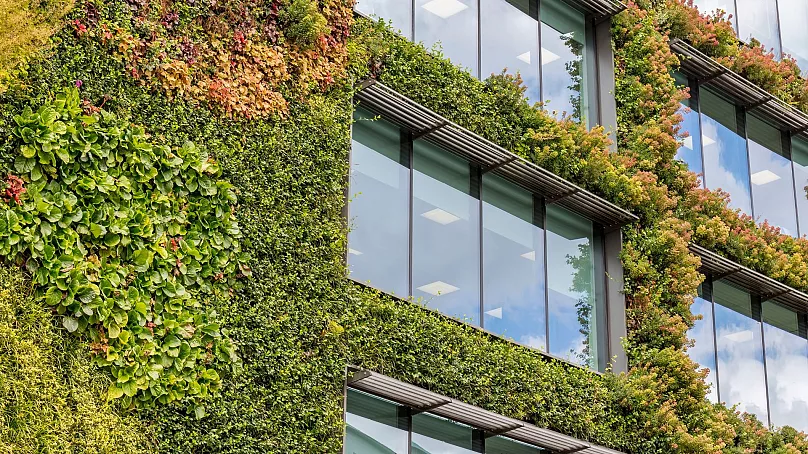Building a Sustainable Future: Emission Reductions in the Built Environment
As we confront the global climate crisis, sustainable construction takes center stage in our efforts to reduce emissions. The built environment, accounting for 40% of global CO2 emissions, demands eco-friendly solutions. Discover how we can build a greener future.

The growing concern over climate change has led us to reevaluate and address the carbon footprint of sectors that often go unnoticed. The built environment, responsible for approximately 40 percent of global carbon dioxide (CO2) emissions, stands as a silent contributor to the ongoing climate crisis. Addressing the environmental impact of our structures is essential to achieving a sustainable and eco-friendly future. The choices made during the design and construction phase significantly impact emissions, making this an important area for climate change mitigation. The first ten years of a building's life account for a significant portion of its emissions, making sustainable construction a key pathway for reducing our carbon footprint.
One of the critical contributors to construction emissions is embodied carbon, which includes the CO2 emissions associated with the production, transportation, assembly, and eventual demolition of building materials. During these initial years, embodied carbon contributes to 40-70 percent of a building's total emissions. With recent legislative developments like the Inflation Reduction Act (IRA) and the Infrastructure Investment and Jobs Act (IIJA), the focus on sustainable construction has gained momentum, providing a clear path to reducing emissions.

Embodied emissions encompass a significant portion of a building's carbon footprint. The extraction, transport, and manufacturing of raw materials into building components account for 65-85 percent of embodied carbon emissions and approximately 10-11 percent of global greenhouse gas emissions. These emissions begin with the mining of raw materials like limestone and iron ore, involving heavy, diesel-operated machinery and explosives that release pollutants like nitrogen oxides and carbon monoxide. Emissions continue as these raw materials are transported to manufacturing plants. However, the majority of emissions are released during the manufacturing of building materials, particularly cement and steel. The production of cement and steel alone contributes almost five billion tons of CO2 annually.
Addressing this challenge requires changes in various aspects of building construction, including mining practices, energy sources, material standards, and composition. Electrically-powered processes for materials like steel and specific types of glass have been identified as a way to reduce emissions. However, for this to be a sustainable solution, the electricity used must come from renewable resources like solar and wind. The United States must invest in its electric grid to support electricity-intensive building materials production effectively. Cement production, notorious for its high emissions, is challenging to decarbonize. The majority of emissions result from chemical reactions in clinker production. Emerging technologies, like carbon-negative concrete and pozzolan made from recycled glass, offer promising ways to reduce carbon emissions in cement production. These innovations not only reduce emissions but also provide other benefits, such as energy efficiency, reduced heat absorption in buildings, and mitigation of the urban heat island effect.

Policies at the federal, state, and local levels can promote the use of greener materials in construction. California, for example, has adopted new building codes that mandate low-emission materials, reuse of existing structures, or lifecycle performance analysis for larger buildings. The IRA allocates over $2 billion to the procurement of construction materials with lower embodied greenhouse gas emissions for federal buildings and transportation facilities.
Reducing emissions at the end of a building's life is also essential. This phase contributes to up to 15 percent of a building's total embodied carbon emissions. In 2018, building demolition in the United States produced over 540 million tons of debris. This enormous waste stream can be reduced by designing buildings for deconstruction. Design for deconstruction aims to construct buildings with minimal effort required to repurpose their materials. This approach aligns with the principles of a circular economy and simplifies the reuse process. However, these considerations must be incorporated into the planning phase of new construction projects.

Deconstruction, an alternative to demolition, is a method that carefully removes materials from a building at the end of its lifespan. While deconstruction has higher upfront costs compared to demolition, it can generate job opportunities and support material warehousing, retail, sales, and sustainable construction. It also increases the availability of reused materials, which can encourage cleaner purchase agreements and emission reduction goals for public and private construction projects. Innovations in recycling processes offer the potential for more efficient recycling of materials that cannot be deconstructed and reused.
Ultimately, the most effective way to reduce emissions in the built environment is to limit the scale of new construction projects and repurpose existing structures. Zoning laws can be adjusted to allow the reuse of existing buildings, and clean purchase requirements can encourage the use of cleaner materials and practices. Sustainable practices, policies, and emerging technologies can drive significant emission reductions in the building sector. With ongoing public infrastructure investments and a growing focus on sustainability, policymakers have a unique opportunity to create standards for sustainable construction, leading to a sustainable future for the U.S. building sector.
.png)